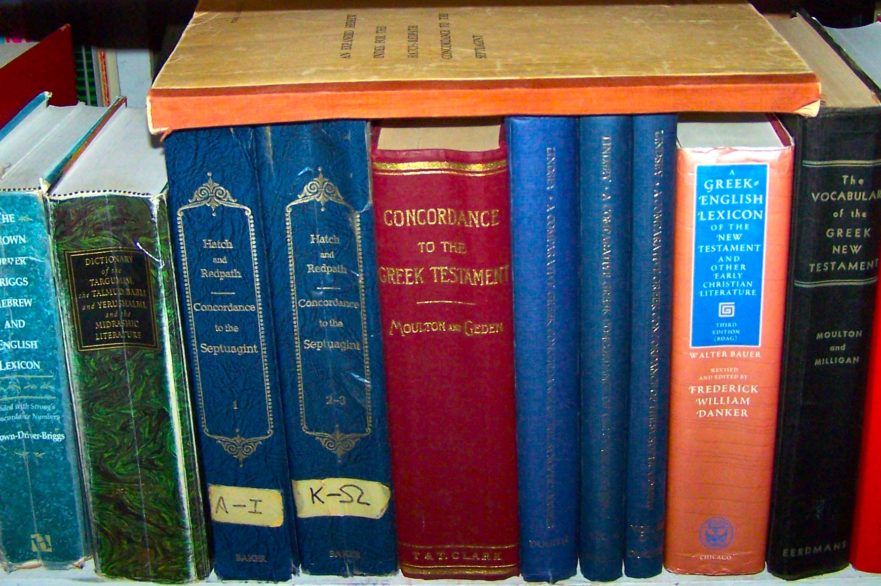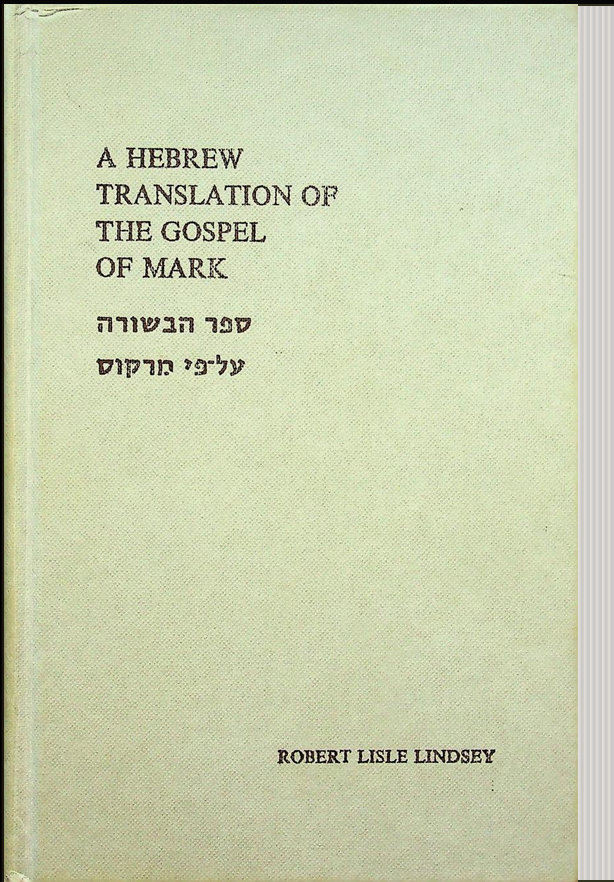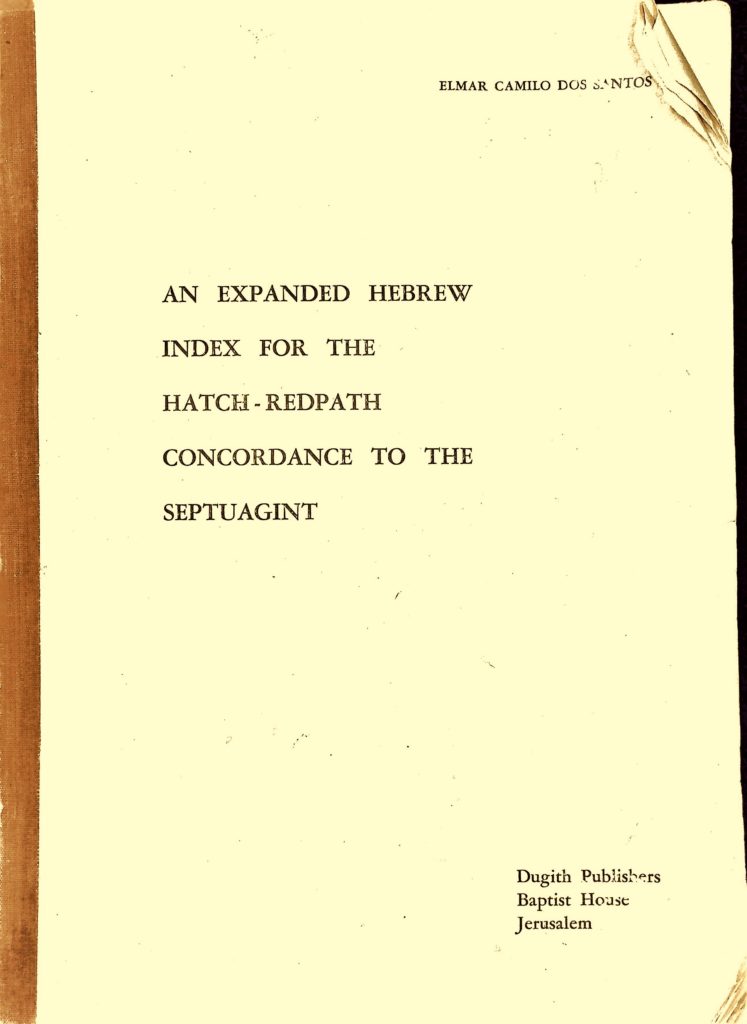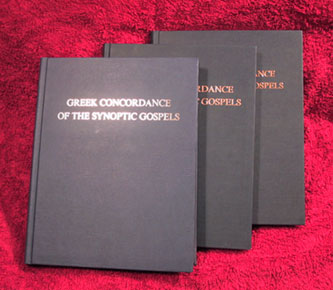Jerusalem Perspective (JP) has made three foundational resources for the study of the Synoptic Gospels freely available to the public in its bookstore and via the Internet Archive.
A Hebrew Translation of the Gospel of Mark
The first resource is Robert Lindsey’s A Hebrew Translation of the Gospel of Mark. It was in the production of this translation that Lindsey discovered how readily the Greek of the Synoptic Gospels reverts to Hebrew, leading to Lindsey’s theory that behind the Greek sources of Matthew, Mark and Luke there stands a Hebrew account of the Life of Jesus. Lindsey also realized that Luke’s Gospel and non-Markan portions of Matthew revert to Hebrew more readily than the Gospel of Mark. This realization led to Lindsey’s hypothesis that Luke is the earliest of the Synoptic Gospels, that Mark is based on Luke, and that Matthew is based on Mark and Luke’s Hebraic-Greek source.
Lindsey describes his hypothesis and the evidence that supports his conclusions in detail in the introduction to his A Hebrew Translation of the Gospel of Mark. Revised and corrected versions of this introduction and of the foreword to A Hebrew Translation of the Gospel of Mark have been published previously on JP (Introduction to A Hebrew Translation of the Gospel of Mark; Foreword to Robert Lindsey’s A Hebrew Translation of the Gospel of Mark). Now the Greek text and Lindsey’s Hebrew translation of Mark’s Gospel are freely accessible to all users of the internet.
Click here to view Lindsey’s A Hebrew Translation of the Gospel of Mark on the Internet Archive.
An Expanded Hebrew Index for the Hatch-Redpath Concordance to the Septuagint
The second resource is An Expanded Hebrew Index for the Hatch-Redpath Concordance to the Septuagint by Elmar Camilo Dos Santos. With this index a user is able to determine not only what Greek equivalents were used to translate a given Hebrew lexeme, but also the frequency with which these equivalents occurred. Below is the entry for the Hebrew word אֱלֹהִים (’elohim, “god”):

Entries are arranged in alphabetical order—first for the Septuagint (LXX), then for those portions of Ecclesiasticus (Ben Sira) with Hebrew equivalents, and finally for Hexaplaric fragments. Thus we see that the LXX translators rendered אֱלֹהִים once as ἄγγελος (angelos, “messenger,” “angel”), once as εἰδωλεῖον (eidōleion, “idolatrous temple”; variant spelling εἰδώλιον [eidōlion]), twice as θεῖος (theios, “divine,” “[a] divinity”), 42xx as θεός (theos, “god”), 4xx as θεοσεβής (theosebēs, “god-fearing”), once as θεοσέβεια (-βία) (theosebeia [-bia], “fear of god”), 187xx as κύριος (kūrios, “lord”), once as παντοκράτωρ (pantokratōr, “ruler of all things”) and once as πάτραρχος (patrarchos, “ancestral deity”). In portions of Ecclesiasticus with Hebrew equivalents אֱלֹהִים is equivalent to Ἐλεισαῖε (Eleisaie)/ Ἐλισαῖε (Elisaie)/ Ἐλισσαῖε (Elissaie), all variant forms of the name Elisha, θεός (4xx) and κύριος (14xx). In Hexaplaric fragments ἀλαϊ, ἀνωχὲλωεὶμ (= ἀνὼχ ἐλωεὶμ), ἐλωαϊ, ἐλωείμ, ἐλωή and οὐβελωαϊ are equivalent to אֱלֹהִים.
Combined with the information provided in the Hatch and Redpath LXX concordance, which shows how frequently each Greek lexeme occurs as the translation of its Hebrew equivalents, the information provided in Dos Santos’ index is vital for the purpose of accurately reverting the Greek of the Synoptic Gospels to Hebrew. For this purpose Dos Santos’ index remains unsurpassed even by Takamitsu Muraoka’s A Greek ≈ Hebrew/Aramaic Two-way Index to the Septuagint, despite the aesthetic deficiencies of Dos Santos’ index.
Click here to view Dos Santos’ An Expanded Hebrew Index for the Hatch-Redpath Concordance to the Septuagint on the Internet Archive.
A Comparative Greek Concordance of the Synoptic Gospels
The three-volume A Comparative Greek Concordance of the Synoptic Gospels, compiled by Elmar Camilo Dos Santos and edited by Robert L. Lindsey, lists every Greek word that occurs in the Gospels of Matthew, Mark and Luke. Entries are arranged according to Matthean pericope order. An entry may occur singly if the pericope in which the Greek lexeme appears is unique to one of the Synoptic Gospels, doubly if the Greek lexeme appears in a pericope shared in only two Gospels, and triply if the Greek lexeme appears in a pericope shared by all three Synoptic Gospels. For instance, this is how the entry for ἀσπασμός (aspasmos, “greeting”) appears in A Comparative Greek Concordance of the Synoptic Gospels:
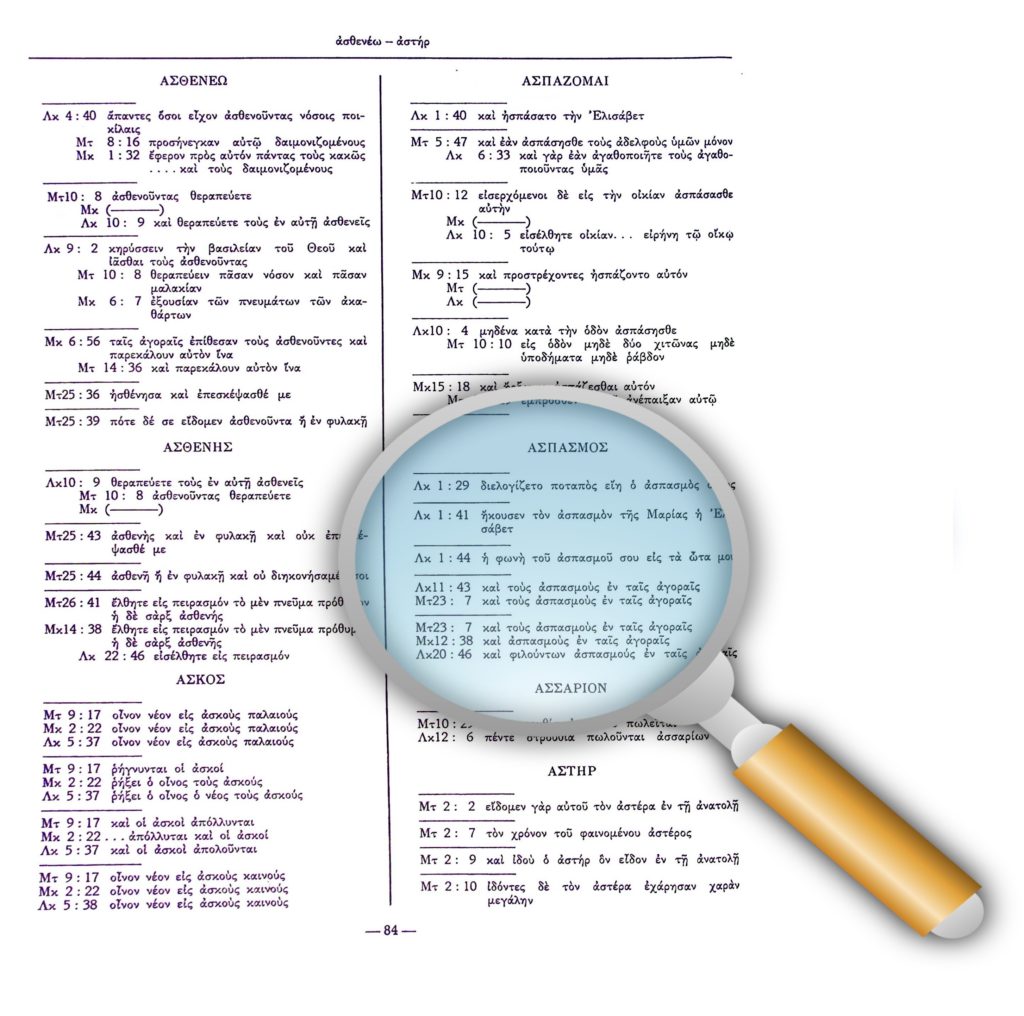
Because the instances of ἀσπασμός in Luke 1:29, 41 and 44 occur in pericopae that are only present in Luke, these instances of ἀσπασμός receive single entries.
The next entry for ἀσπασμός, however, occurs in a Lukan-Matthean Double Tradition (DT) pericope (Luke 11:43 ∥ Matt. 23:7). As the reader can see, ἀσπασμός occurs in both versions.
The following entry for ἀσπασμός occurs in a Triple Tradition (TT) pericope, and therefore receives a triple entry. In this case ἀσπασμός occurs in all three versions.
But sometimes a Greek term appears in one version of a pericope yet not in another. In such cases the entry appears doubly or triply but the version that lacks the particular Greek term is indented. Thus, for the Greek noun αἰών (aiōn, “eon,” “age”) we find that it occurs in a TT pericope in which Matt. 12:32, Mark 3:29 and Luke 12:10 are parallel, but while αἰών occurs in Matt. 12:32 ∥ Mark 3:29, it is missing in Luke 12:10.
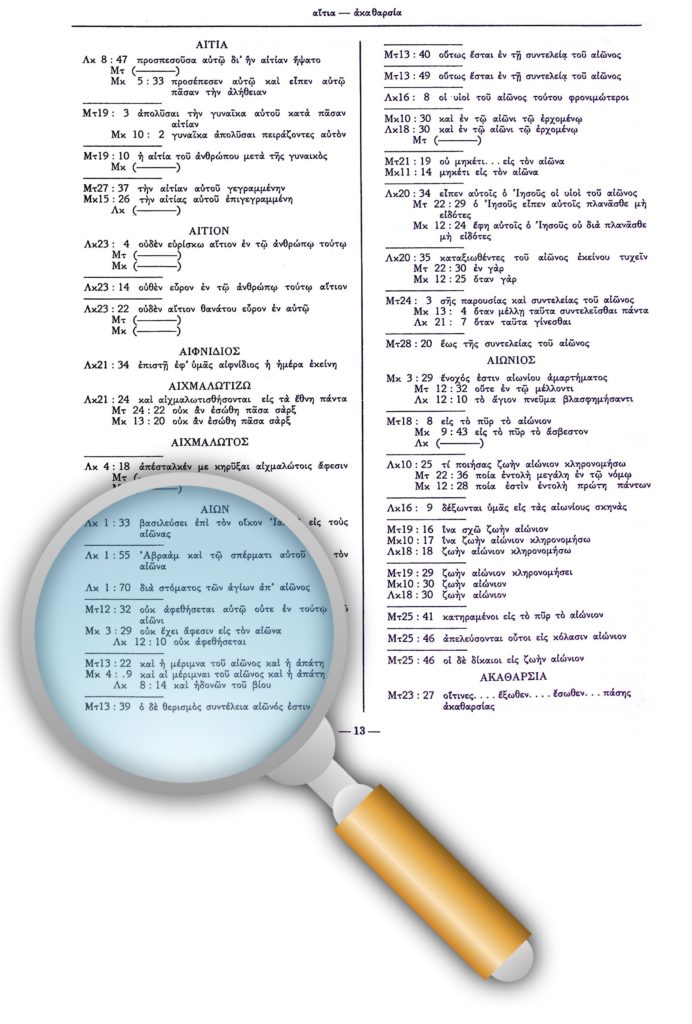
Other times a term occurs in a pericope with parallels in other Gospels but the particular verse in which the term occurs is absent in the parallel pericopae. In such cases the version that lacks the verse is indented and marked with a long dash (—). Thus, in the entry for ἀγορά (agora, “market”) we see that it occurs in a Markan-Matthean pericope, but Matthew’s version of the pericope lacks a verse parallel to Mark 6:56:
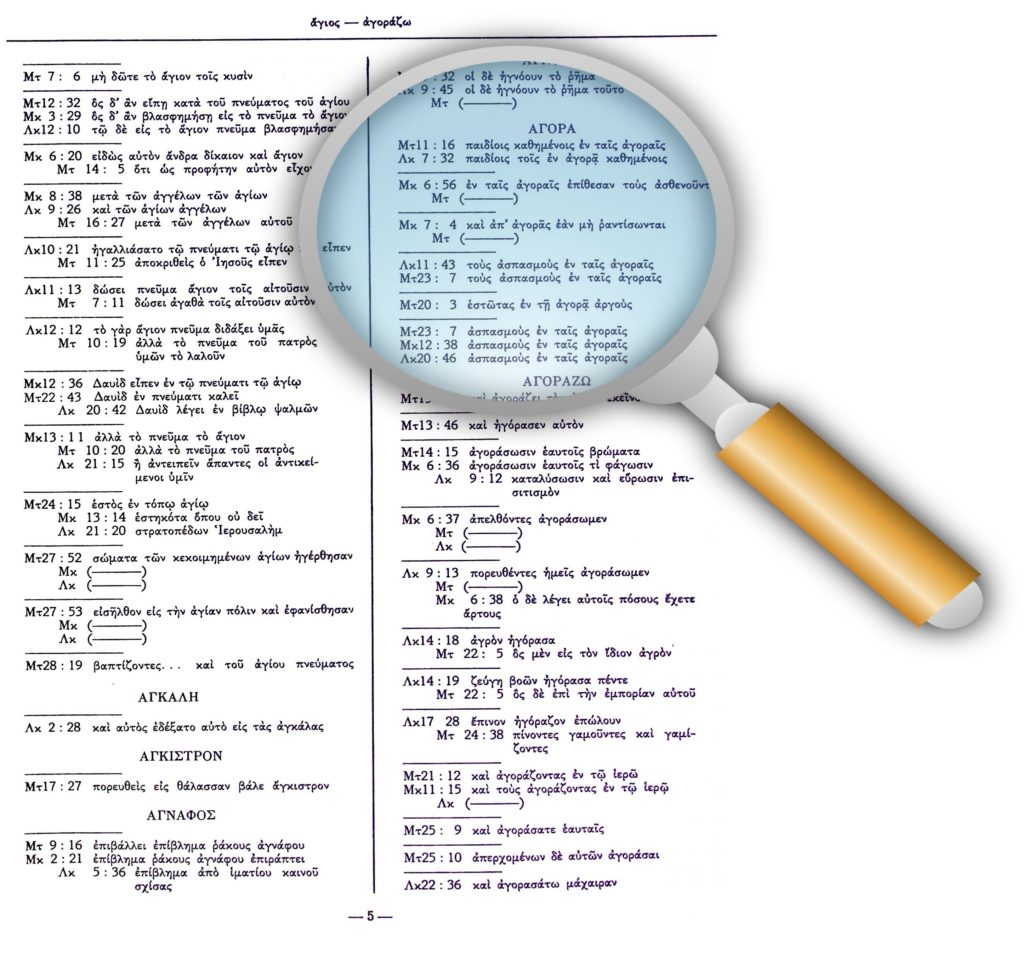
The arrangement of the concordance allows users to determine whether particular vocabulary is typical of the style of one synoptic evangelist or whether it is deeply embedded in the synoptic tradition. Such determinations are crucial for reconstructing the Greek source(s) behind the Synoptic Gospels.
For more on A Comparative Greek Concordance of the Synoptic Gospels, see the review by R. Steven Notley (Book Review: Robert Lindsey’s A Comparative Greek Concordance of the Synoptic Gospels).
To access A Comparative Greek Concordance of the Synoptic Gospels on the Internet Archive click on the links below:
 Our deepest thanks to the donors who made the scanning of these foundational resources possible. |

